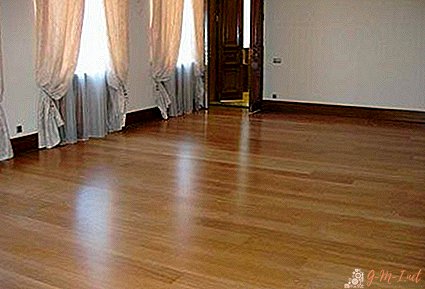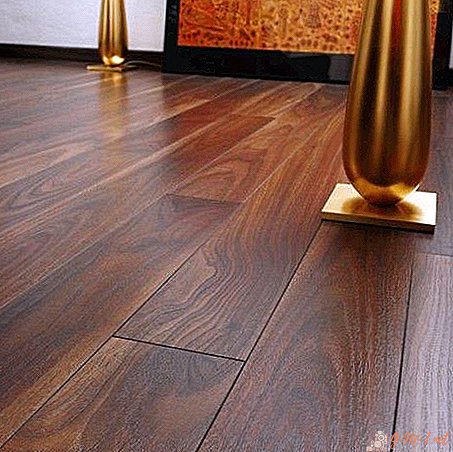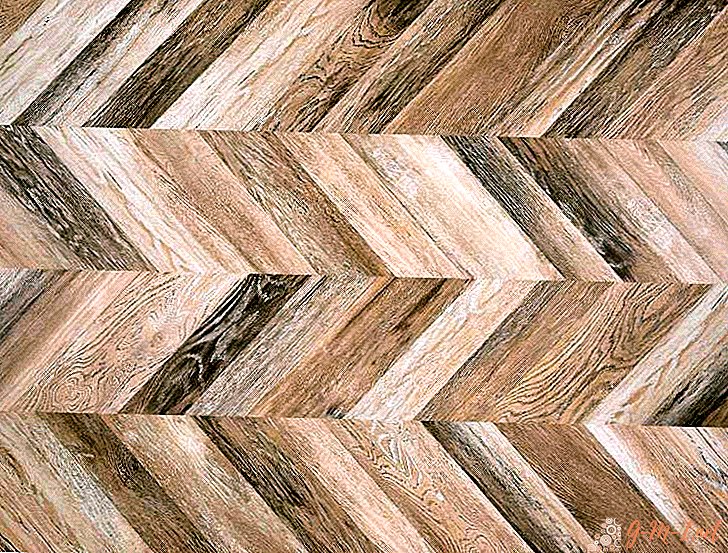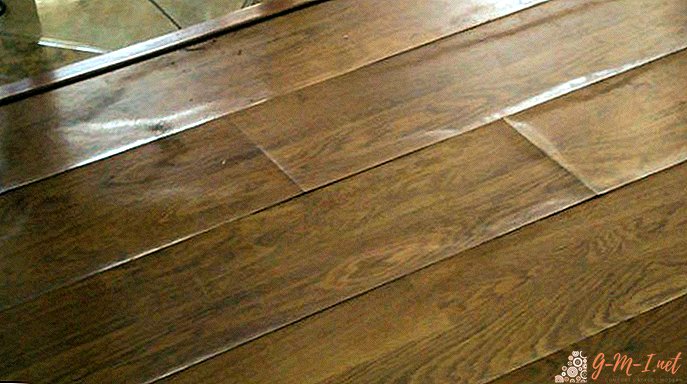Laminate is one of the relatively recent developments, which quickly gained popularity among apartment owners. Its attractive cost is combined with ease of installation and a decent assortment of drawings. At the same time, this flooring is easy to care for, and manufacturers guarantee its long service life. But is it really so rosy?

Laminate - what characteristics depend on
All the advantages and disadvantages of an aesthetic floor directly depend on the structural features of its elements. The board most often consists of four layers:
- lower melamine layer that prevents deformation of the lamella;
- a fiberboard plate (MDF or HDF) - the base on which the strength of the laminate depends;
- paper with a printed pattern and texture, providing a decorative coating;
- acrylate protective layer that protects against abrasion.
In some cases, the boards are supplemented with a wax coating of the locks, which increases the moisture resistance by impregnation and even a soundproofing substrate applied by the manufacturer on the back of the product. But all these innovations are characteristic only for expensive premium products.
And the best way to determine the advantages and disadvantages of the material is a detailed review of the middle price segment.

Coating benefits
The first thing that catches your eye when familiarizing yourself with the range of laminate flooring is the variety of design solutions.
The most common imitations of various varieties of valuable wood on the market. But with due diligence, you can find a laminate that is visually indistinguishable from various breeds of decorative stone, and even plates that fold into a mosaic.
A more detailed study of lamellas attracts attention with the diversity of the structure of castle systems. Each manufacturer is trying to bring something new that facilitates the assembly of the coating and increases the reliability of adhesion of the boards to each other. And they succeed - the installation of the laminate became a feasible task even for those who had never before worked with building materials.

The manufacturer's stated wear resistance is another advantage of the laminate. It is true that the coating has served all 8-10-15 years without loss of aesthetic qualities, it is important to choose its thickness correctly and confidently navigate in the marking. There are only a couple of numbers. The first indicates the destination: 2-house, 3-public place. The second is for durability: 1 - for places with low traffic, 2 - with medium, 3 - can withstand heavy loads.
Among the "public" there is even a 34th class - a laminate for airports and train stations. But choosing it for your home is undesirable - it will already be a costly excess.
Ease of care is perhaps one of the most attractive advantages. To maintain the laminate in perfect cleanliness, it is enough to vacuum it and wipe it with a damp rag. Even artwork with a marker or felt-tip pen is easily removed from a quality coating. And no rubbing to a shine, as is the case with parquet - the acrylate layer looks perfect right up until it is completely erased.

Strength will delight those who have previously been familiar with linoleum. No traces of furniture, heels or accidentally dropped objects will remain on the laminate. Expensive coatings even withstand the test of fire - a fallen candle or cigarette does not leave behind unsightly burns.
Disadvantages
There are fewer of them than advantages, but they are.
The most serious weakness of the laminate was ordinary water. Despite all the attempts of manufacturers to increase the moisture resistance of the coating, it was not possible to make it completely invulnerable. Therefore, the kitchen and bathroom are deleted from the list of rooms with the original floor - it’s enough to fill in the water for an hour and it will become completely unusable. True, random puddles that are cleaned instantly will not harm the lamellas.
If you still managed to scratch or break a solid board, it is impossible to repair it. Minor damage is temporarily hidden by a putty of a suitable shade, but more serious damage will require a complete replacement of the lamella. For this reason, it is always recommended to buy a laminate with a small margin.

Lamels have a good sound. Even a soundproofing substrate can not cope with a booming echo, regardless of its thickness. And if in a private house this is a small problem, then in an apartment building it is better to think over the sound insulation of the subfloor. Otherwise, the neighbors below will hear every step.
And finally - the laminate is cold. If you do not lay a warm floor system under it, a bare foot walk through the lamellas will remind you of walking on wet concrete.

Leave Your Comment